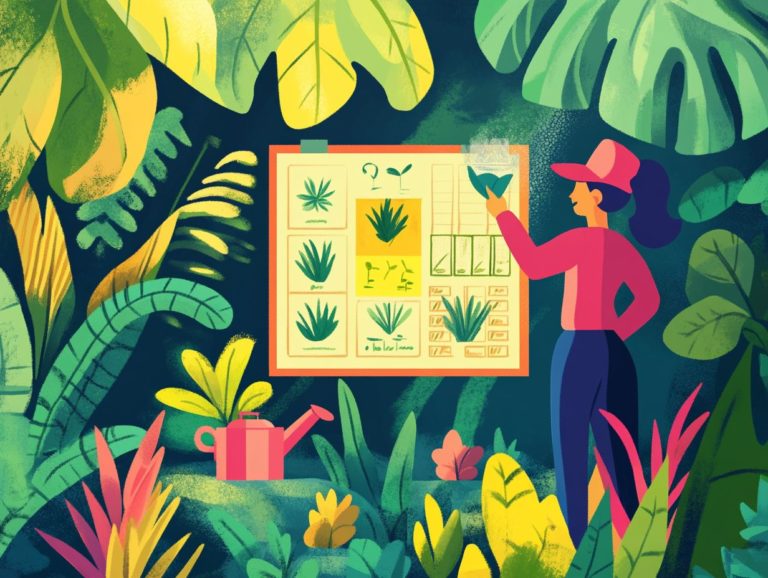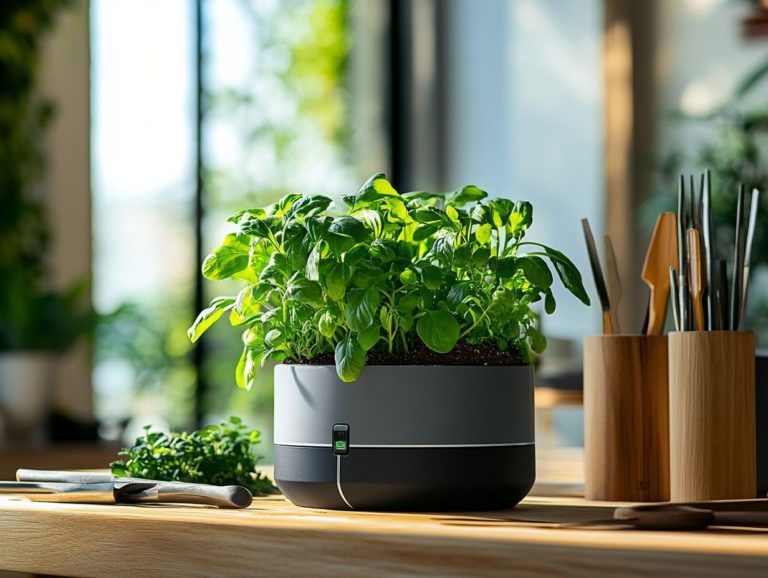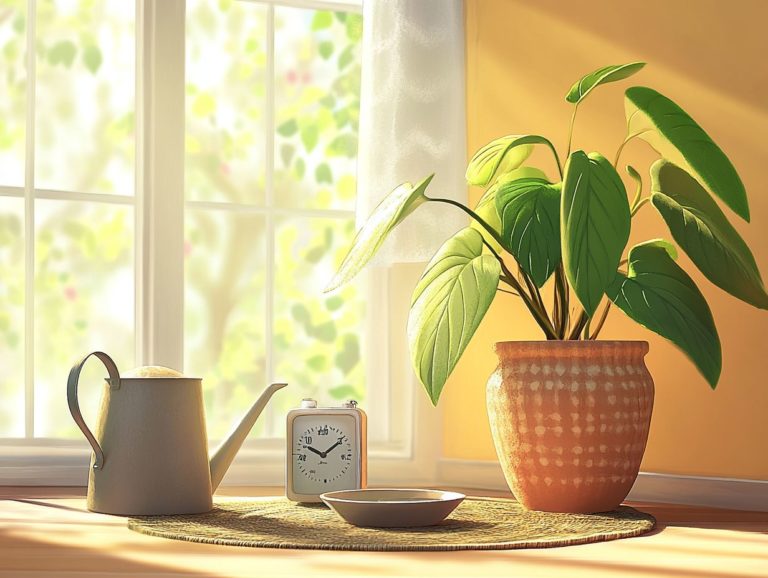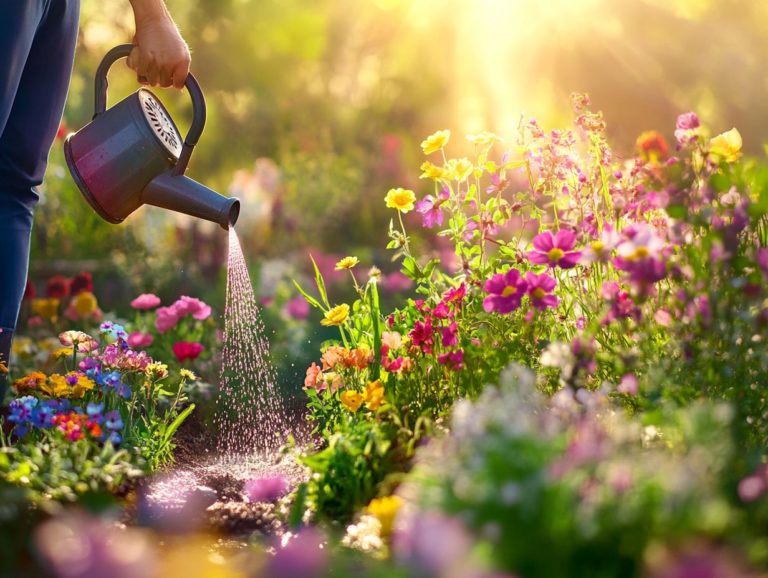How Much Water Does Your Plant Really Need?
Understanding your plants’ water needs is crucial for their health and vitality. This article delves into the various factors that influence water requirements, guiding you in identifying when your plants are either under or overwatered.
You will uncover effective watering methods, tailored strategies for different types of plants, and how to establish an appropriate watering schedule. You will also find practical tips for conserving water in your gardening routine.
Empower yourself with the knowledge to nurture flourishing plants while being considerate of your resources.
Contents
- Key Takeaways:
- Understanding Plant Water Needs
- Signs of Under and Overwatering
- Methods for Watering Plants
- Adjusting Watering Based on Plant Type
- Watering Frequency and Amount
- Tips for Conserving Water in Plant Care
- Frequently Asked Questions
- How Much Water Does Your Plant Really Need?
- What are some signs that my plant is not getting enough water?
- Can I overwater my plant?
- Does the type of pot affect how much water my plant needs?
- Should I water my plants in the morning or evening?
- How can I tell if my plant is getting the right amount of water?
Key Takeaways:
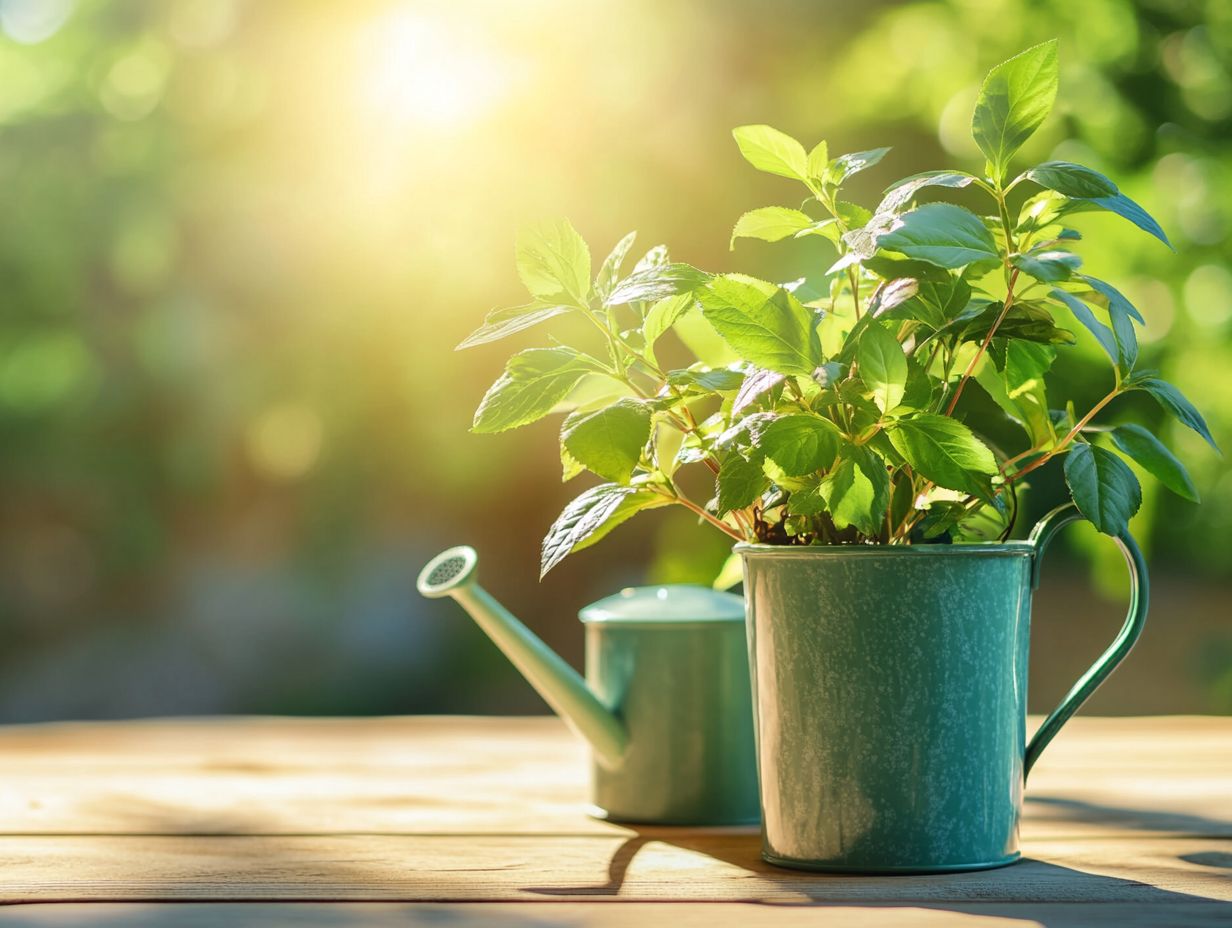
- Understanding your plants’ water needs is essential for their health and growth. This requirement is affected by factors like climate, soil, and plant type.
- Signs of under and overwatering include wilting, yellowing leaves, and root rot. Properly identifying and addressing these issues is crucial for plant health.
- Watering frequency and amount should be adjusted according to the plant’s type. A watering schedule should be determined based on soil moisture and plant size.
Understanding Plant Water Needs
Understanding the water needs of your plants is essential for maintaining their health and promoting healthy growth. Different varieties, such as succulents like Aloe or tropical favorites like the Peace Lily and Snake Plant, each have unique moisture requirements.
Factors such as soil type, environment, and humidity play a significant role in determining how often and how much water these plants require. For instance, you’ll find that succulents flourish in drier conditions, while tropical plants thrive in a more humid environment.
Factors that Affect Water Requirements
Several factors significantly impact the water requirements of your plants, including soil type, moisture levels, light exposure, temperature, and humidity. Understanding these elements is essential for ensuring healthy growth across various plant species.
Take, for instance, the snake plant or ZZ plant. These resilient companions thrive in low-light conditions and require less water, thanks to their origins in arid environments. In contrast, water-loving plants like ferns flourish in humid settings and appreciate consistently moist soil.
Temperature fluctuations can also impact evaporation rates. During sweltering summer months, both your outdoor and indoor plants may need more frequent watering. By recognizing these specific needs, you can cultivate a thriving environment tailored to each plant’s unique requirements.
Signs of Under and Overwatering
Recognizing the signs of underwatering and overwatering is crucial for maintaining your plants’ health. When plants are underwatered, their leaves may turn dry and brown.
Act fast if you see these signs! Overwatered plants may display yellowing leaves and a mushy texture, which often signals root rot. By identifying these telltale signs, you can fine-tune your watering practices and ensure your plants thrive.
Identifying and Addressing Plant Stress
Identifying and addressing plant stress is essential for their optimal growth and health. When your plants experience stress, they may show symptoms like wilting, discoloration, or stunted growth, often due to inadequate moisture, insufficient light, or temperature fluctuations.
To truly grasp these conditions, observe changes in leaf texture or size, and keep an eye out for pests, as these can signal underlying issues. Stress may also arise from soil compaction or nutrient deficiencies, which can show up as poor leaf development or leaf drop.
To tackle these challenges, establish a regular watering schedule, adjust light exposure as needed, and ensure your plants receive proper nutrition through fertilization. Incorporating mulch can help retain soil moisture and regulate temperature, while thoughtful pruning can enhance air circulation, alleviating stress and creating a thriving environment for your plants.
Start your watering schedule today to help your plants thrive!
Methods for Watering Plants
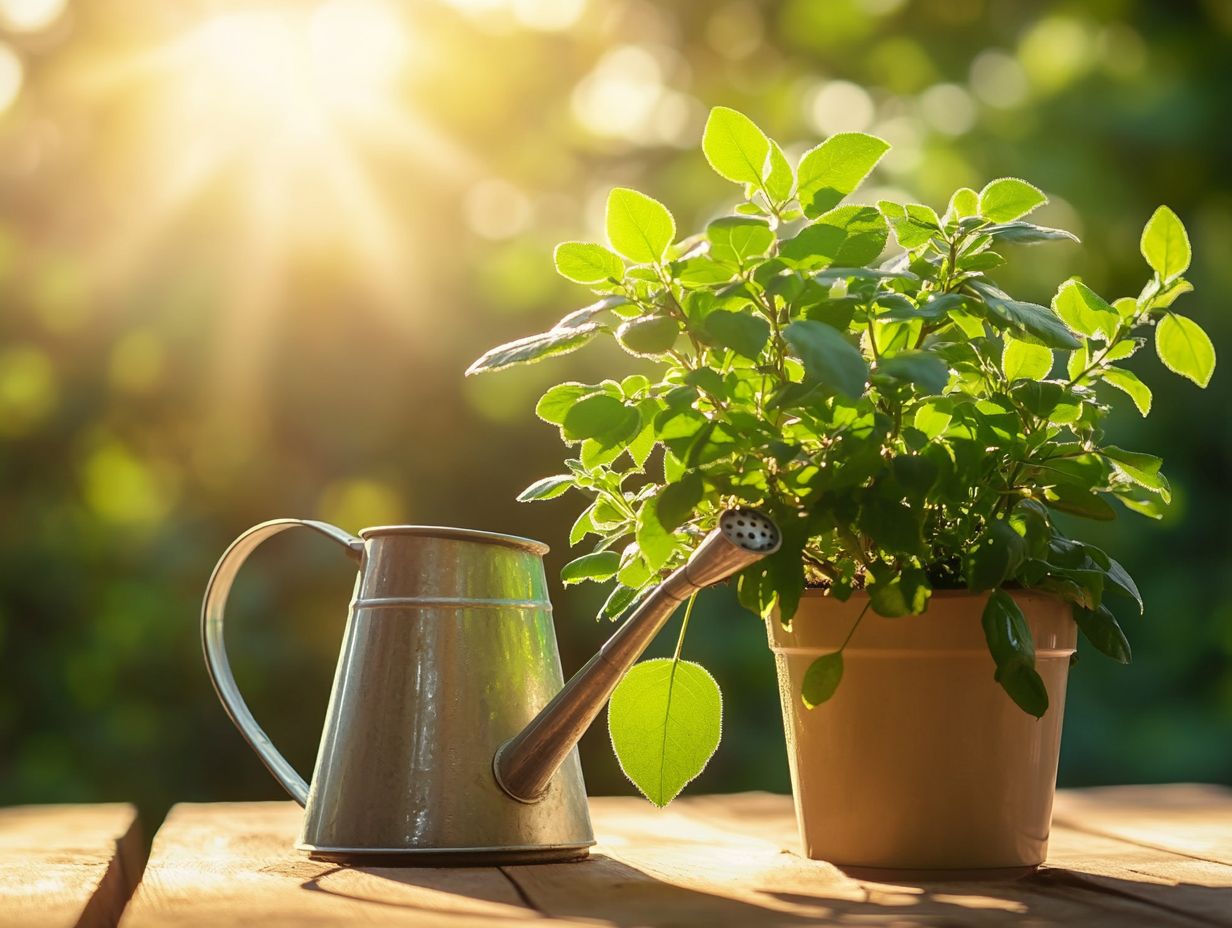
Implementing effective methods for watering your plants can greatly elevate their health and growth. Techniques like using a moisture meter a tool that checks how wet the soil is to assess soil moisture levels, sticking to a consistent watering schedule, and ensuring proper drainage are essential for nurturing vibrant plant life.
Best Practices for Watering Techniques
Implementing best practices for watering techniques is crucial for providing your plants with the nutrients they need to flourish. Regular watering, tailored to the specific needs of each plant type, along with ensuring proper drainage during potting, can help you avoid the pitfalls of both underwatering and overwatering.
For instance, succulents are your low-maintenance friends, requiring water less frequently typically every two to three weeks thanks to their moisture-storing abilities. On the other hand, tropical plants like ferns thrive in consistently moist soil and need more regular attention, often requiring watering weekly or even bi-weekly during the warmer months.
Timing is everything! Watering in the early morning minimizes evaporation and allows the roots to absorb moisture more efficiently. Ensure that the soil drains properly to prevent issues; overly saturated conditions can lead to root rot and other problems. This highlights the importance of a care routine meticulously tailored to each plant’s unique requirements.
Adjusting Watering Based on Plant Type
Adjusting your watering practices according to the type of plant you have is essential for optimal care. For instance, succulents like Aloe thrive on less frequent watering, while tropical plants such as the Rubber Plant or Fiddle Leaf Fig flourish in more humid conditions and require regular moisture to support their growth.
Tailoring your approach not only enhances the health of your plants but also elevates your gardening experience.
Specific Needs for Different Types of Plants
Different types of plants have different watering needs for the best growth. For instance, succulents like Aloe thrive in dry soil, while tropical varieties such as the Peace Lily and Snake Plant flourish in consistently moist conditions, necessitating regular watering.
Cacti, on the other hand, are best suited for arid environments and should be watered sparingly, typically every 3-4 weeks. In contrast, leafy greens like Spinach and Lettuce require more frequent hydration, ideally every few days, to maintain consistently damp soil.
Fruiting plants, such as Tomatoes, benefit from deep, infrequent watering to encourage robust root development, while herbs like Basil prefer evenly moist soil, demanding a careful balance.
By understanding these specific requirements, you can significantly enhance plant health and productivity, ensuring that each type receives the meticulous care it needs to truly flourish.
Watering Frequency and Amount
How often and how much you water is key to keeping your indoor and outdoor plants healthy. In summer months or during drought conditions, your plants may urgently need more water!
Also, seasonal changes should inform adjustments to their watering schedule, ensuring your greenery thrives year-round.
Determining the Right Watering Schedule
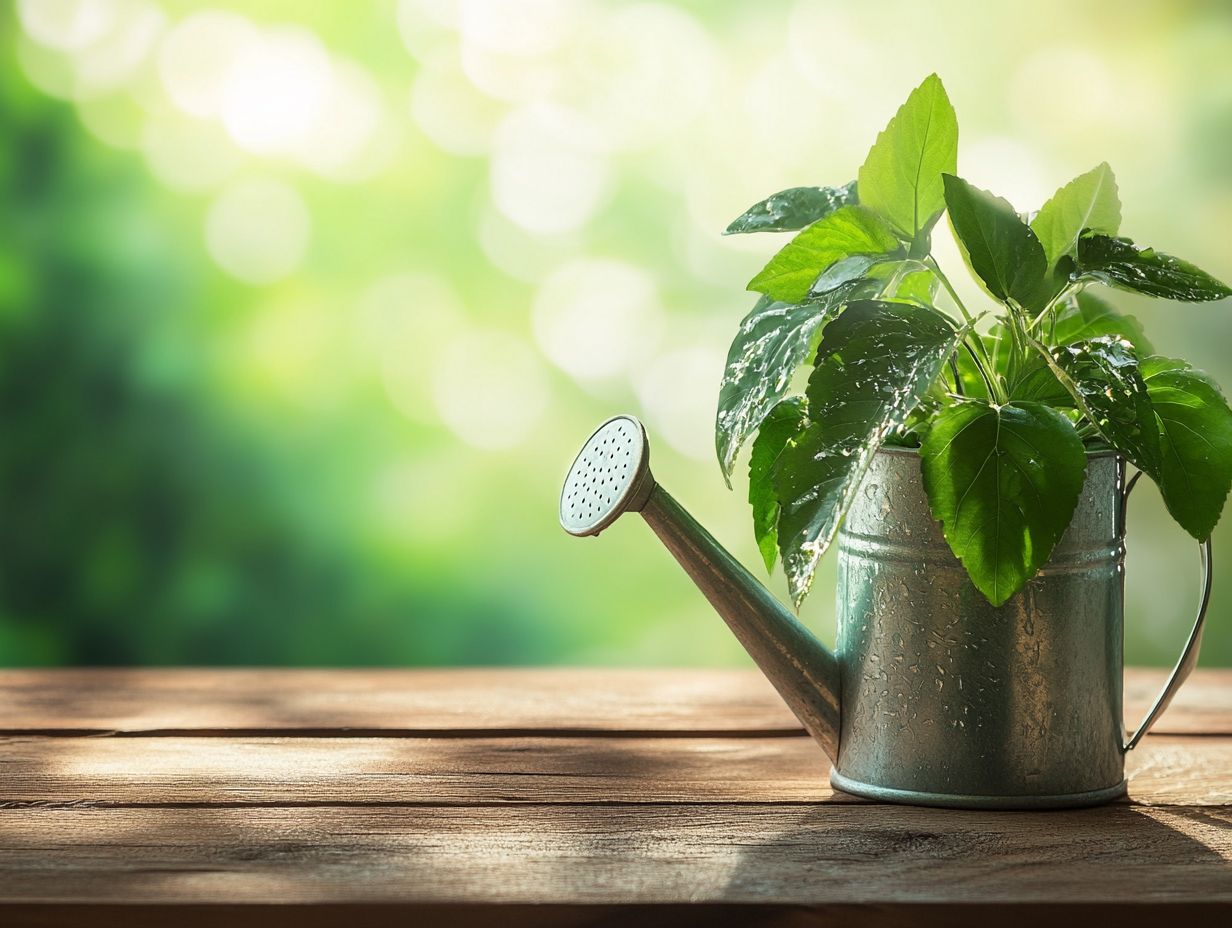
Determining the right watering schedule is essential for preventing issues like underwatering or overwatering. By carefully observing the moisture level of the soil and understanding the specific needs of each plant, you can establish an effective watering routine.
One practical approach is to use a moisture meter. This tool offers real-time insights into soil conditions, allowing you to test various areas and identify dry spots that may need a little extra love and attention.
Keeping an eye on the weather can also refine your watering schedule. For example, if rain graces your garden, it might lessen the need for artificial watering. By understanding each plant’s unique requirements like ability to survive without much water or water retention you can customize your routine accordingly.
Over time, maintaining a consistent watering schedule based on these observations ensures your plants receive the right amount of moisture, fostering healthier growth and vibrant blooms.
Tips for Conserving Water in Plant Care
Conserving water in your plant care routine is not just a nod to environmental responsibility; it also fosters healthier, more vibrant plants.
- Use self-watering pots.
- Group your plants according to their water requirements.
- Apply mulch.
By adopting these strategies, you can dramatically minimize water waste while ensuring that each plant receives the moisture it needs to thrive.
Reducing Water Waste and Saving Resources
Reducing water waste and conserving resources is vital for your sustainable gardening endeavors. Techniques like using a moisture meter to keep tabs on soil moisture, watering early in the morning, and setting up rainwater collection systems will supercharge your efforts to save water!
Implementing drip irrigation systems can drastically cut down your water consumption. This system delivers water directly to plant roots, ensuring they get just what they need without waste. Companion planting is another powerful strategy you can employ. By growing certain plants together, you can maximize water use and keep pests at bay, ultimately nurturing a healthier ecosystem.
Mulching your soil not only conserves moisture but also helps regulate temperature and suppress weeds, enhancing the overall vitality of your garden. Using tools like rain barrels to collect runoff ensures that every precious drop counts, giving you the power to contribute to a more sustainable future.
Frequently Asked Questions
How Much Water Does Your Plant Really Need?
The amount of water your plant needs depends on various factors such as the type of plant, its size, and the environment it is in. Generally, plants need about 1 inch of water per week, but this can vary.
What are some signs that my plant is not getting enough water?
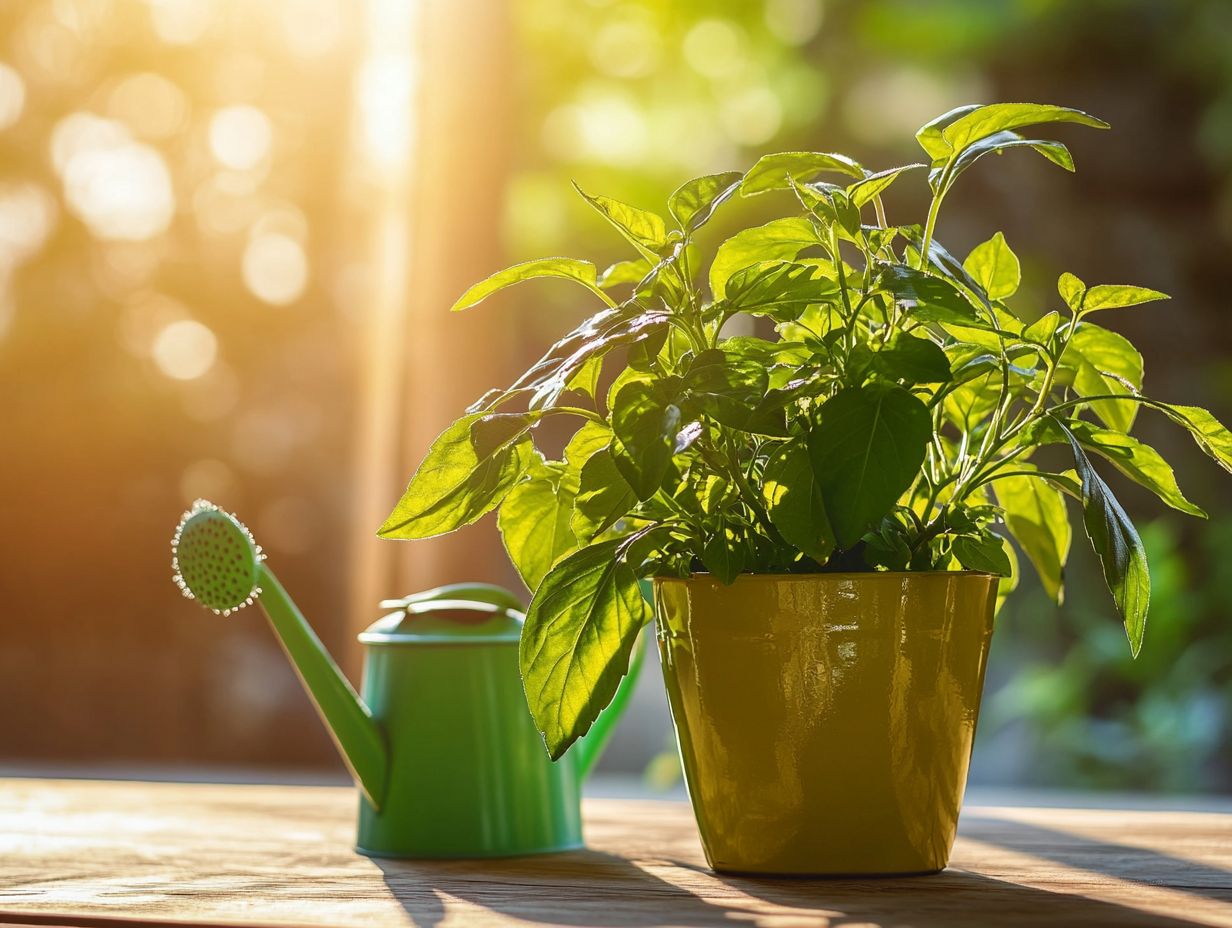
If your plant’s leaves are wilting or turning yellow, it may be a sign that it is not getting enough water. You can also check the soil for dryness; if it is dry a few inches below the surface, your plant may need more water.
Can I overwater my plant?
Yes, it is possible to overwater your plant. If the soil is constantly soggy or the leaves are turning brown and mushy, it may be a sign of overwatering. Make sure to check the soil moisture before watering and adjust the frequency accordingly.
Does the type of pot affect how much water my plant needs?
Yes, the type of pot can impact how much water your plant needs. Clay pots tend to dry out faster and may require more frequent watering compared to plastic or glazed pots. Additionally, larger pots hold more water and may require less frequent watering.
Should I water my plants in the morning or evening?
It is generally recommended to water your plants in the morning. This allows the water to soak into the soil and be absorbed by the plant’s roots before the heat of the day. Watering in the evening can lead to excess moisture and increase the risk of fungal diseases.
Have more questions? Drop them in the comments below!
How can I tell if my plant is getting the right amount of water?
Check your plant’s water level using a simple method. Stick your finger about an inch into the soil.
If it feels moist, your plant is happy! If it feels dry, it s time to give it some water.
Watch your plant’s growth and appearance. These signs will tell you if it s getting enough water!

